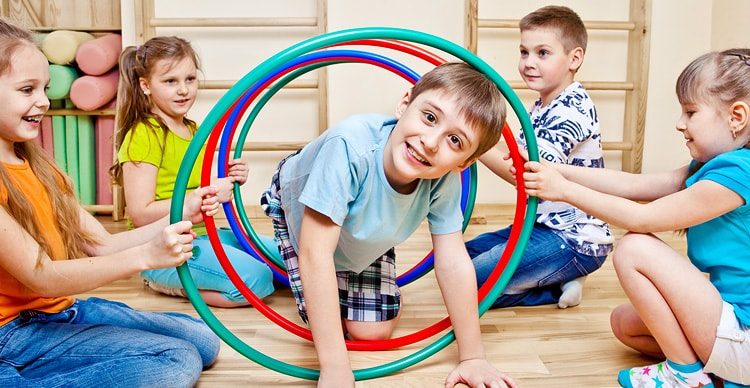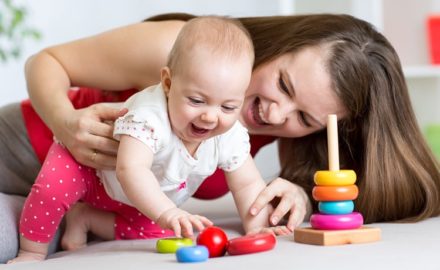Connecting to Literacy Through Wordless Books
By: Elizabeth Wotherspoon
It’s FINALLY time to read your bedtime story which means you will get a little reprieve while your child sleeps. You’ve been looking forward to this moment since you brewed your morning coffee and you are just a few lines away from some peace and quiet. It can be quite tempting to just read the story and call it a day, but if you have a little more energy left in you during this precious learning moment, your child could really benefit.
When reading a story to or with your child, it is recommended to make it as interactive as possible. Sometimes this can be tricky because the words are there for you to read.
Wordless books automatically make reading in an interactive way a little easier because you do not feel obligated to stick to the text that is written.
Here are a couple more tips on how to read a wordless book with your child:
- Add new vocabulary à explain the action in the picture and describe what else you see in the picture
- Appreciate that the pictures are telling the story à talk about how the pictures portray the emotions of the characters and mood of the story
- Emotions are found in the facial expressions and body language of the characters
- The colours of the pictures are providing the mood (e.g., dull colours = sad or gloomy; bright colours = exciting and happy)
- Encourage your child to tell the story based on the pictures à prompt him/her to include details about the setting (e.g., where and when the story is taking place); get him/her to describe the characters; encourage him/her to include the key elements of the plot (e.g., the problem and its resolution)
- Summarize à once your child has told the story in his/her own words, get them to summarize what happened in the beginning, middle, and end – this gives an understanding of basic story structure and helps with comprehension skills
- Comprehension skills:
- Encourage your child to predict what will happen next in the story
- Make connections between the story and real life
- Talk about what the characters might be thinking and feeling
- Brainstorm about the overall message of the story
So, you like your routine of reading your child a couple short stories at bedtime and you don’t want it to take too long because you NEED sleep too and that’s okay. Maybe instead of being a night time activity, a wordless story could become part of your day! If this sounds more appealing, add a little more to the activity:
- Have your child write the text to accompany the pictures à You could do this by making your own story books or you could write the text on post-its and stick them on the pages
- If your child is not yet writing, it’s okay to write these ideas down for him/her
- If your child is enjoying this activity, get them to draw the pictures in their home-made books!
Here’s a list of good wordless story books for children ages four and up:
- Flotsam by David Wiesner
- Tuesday by David Wiesner
- Good Dog, Carl by Alexandra Day
- The Lion & the Mouse by Jerry Pinkney
- The Snowman by Raymond Briggs
- The Red Book by Barbara Lehman
- Wave by Suzy Lee
- Chalk by Bill Thomson
- A Boy, a Dog and a Frog by Mercer Mayer
Here’s another list for younger children:
- Good Night, Gorilla by Peggy Rathman
- Hug by Jez Alborough
- Pancakes for Breakfast by Tomie dePaola
- Have You Seen My Duckling? By Nancy Tafuri
Okay, so now you know how to read a wordless story book with your child so here’s your challenge for tonight when you’re reading your child to sleep. FORGET ABOUT THE TEXT! Let your child choose the book they would like you to read, but tonight, make the story up based on the pictures rather than reading the words. Good luck!!
Connecting to Literacy through ABC & 123
By: Elizabeth Wotherspoon
This may come as a bit of a surprise because some people are so obviously good at math, while others are better at reading and/or writing BUT both literacy AND math skills are rooted in language!
As parents and teachers, we want to do whatever we can to ensure our children are going to be successful in school, and ultimately in life. So, what do we do? We teach our children the alphabet, counting, and to recognize letters and numbers. And while these skills are an important step to achieving literacy, children’s language skills are actually more predictive of their reading and math skills!
What to do
The first step in achieving literacy is building your child’s spoken vocabulary. The more words they understand and use, the better their reading and math outcome!
Here’s what to do at each age to build up vocabulary:
- For your 1-year-old: it is important to expose your child to lots and lots of spoken words. Talk to him/her about what you’re doing when you’re doing it. Narrating your actions is an easy way to expose your little one to a TON of words!
- For your 2-year-old: it’s important to use a variety of words for this age group and to include some sophisticated words.
- For your 3-year old: when your child was one and two the amount and variety of words they were exposed to was important, now that he/she is three, the quality of the interaction becomes more important. Have conversations and tell stories. Talk about what you did today or what you might do tomorrow.
Once a child has started using words to request, comment, greet, and negate they have achieved the first step to becoming literate.
Next, we need to delve a little deeper to form those fundamental skills required for literacy. Here are some guidelines for helping your child acquire those skills:
- Talk about what your child likes
- Repeat, repeat, repeat – children need to hear new words MULTIPLE times before they begin to use them
- Aim for a balanced conversation – we want your child to hear new words AND to have time to think about what was said and how to respond
- Point out objects and concepts in the world around you (e.g., “sticky, this glue is sticky.”)
- Help your child understand the meaning of new words by using actions, gestures, and facial expressions in addition to words
- Tell stories together with your child – these can be about real or made-up events. Simply talking about what you did today or what you might do tomorrow builds pre-literacy skills
- Focus on the SOUNDS of language rather than the letters. For example, “Sam starts with a snake sound: sss.” Become detectives and find all the snake sounds on a page in a book!
- Enjoy shared book reading with your child – this promotes early literacy socialization and teaches children that reading can be fun and interactive
How is math connected to literacy and language?
I have spent a lot of time talking about how to build vocabulary as a fundamental skill for reading, but when does math come into the picture?
Early mathematics is more than recognizing and reciting numbers, children need to understand concepts and relationships. Research shows that mathematical LANGUAGE is one of the strongest predictors of success in math.
Some Tips and Tricks to Integrate Mathematical Language into Your Day
Introducing concepts and relationships to your child early will be so important for his/her academic success and it’s not even difficult to do!
- Use numbers to describe or count in daily conversations rather than focusing on number recognition
- Make comments using numbers (e.g., “You have two cookies! I only have one. You have MORE cookies than I do!”)
Mathematical language includes comparison and spatial concept words, rather than numbers. Here’s an example of some of the words I’m talking about:
- Comparison words: more, less, some, most, fewer, a lot, a little bit
- Spatial concepts: near, far, before, after, front, first, above, below, end
Use words like these at any time with your child – including while reading stories. Make comments and ask questions using this language (e.g., “How do you know the duck has the most seeds?” or “The plane is above the helicopter.”)
Challenge Accepted
I bet you’re thinking to yourself that you already do these things. This posts challenge is to really pay attention to comparison words and spatial concepts you’re using when interacting with your child. After you’ve done this, come up with some activities you think it would be easy to integrate mathematical language into and how that might look.
As an example, I might bring a pie plate, some coloured felt, and fake fruit and “bake a pie” as an activity that promotes learning new vocabulary while using mathematical language.
- First we make the crust (put the coloured felt on the bottom of the pie plate)
- After the crust is made, we add the fruit
- We need a lot of fruit to fill the pie
- Let’s add more fruit – we just need a little bit more
- Oh, no we have too much – we need less fruit
- After we’ve got the right amount of fruit, we add the crust
- Put it on top of the fruit
- Last, we bake the pie for 30 minutes at 350 degrees
Welcome!
Welcome to Connecting Dot, I am so pleased to have you here! It’s an exciting time as we launch our new website and social media pages.
Connecting with SLP
Here’s what you need know about Speech-Language Pathology services at
Connecting With Play
Have you ever wondered why learning language seems so easy for some kids and so hard for others?




